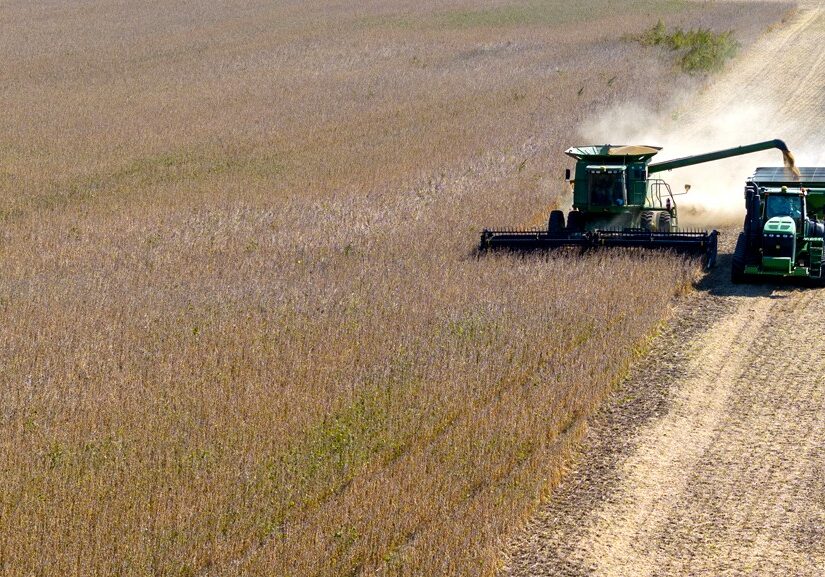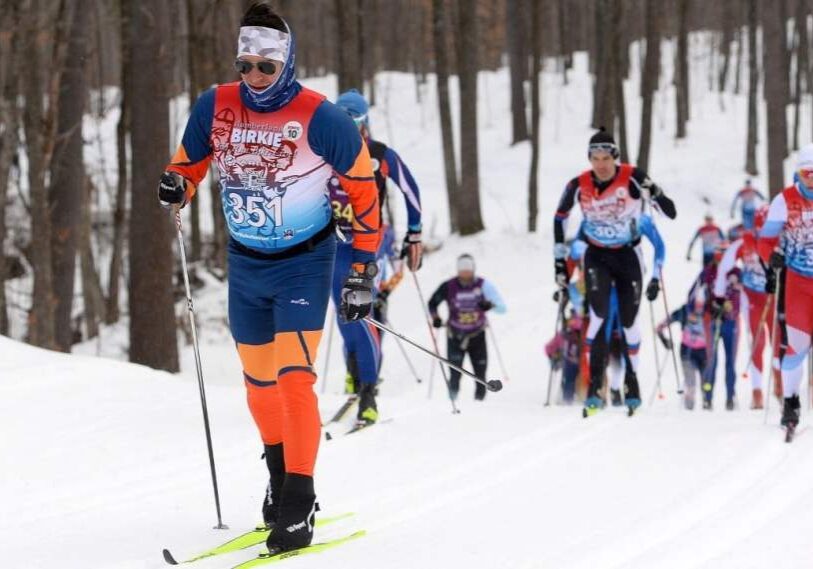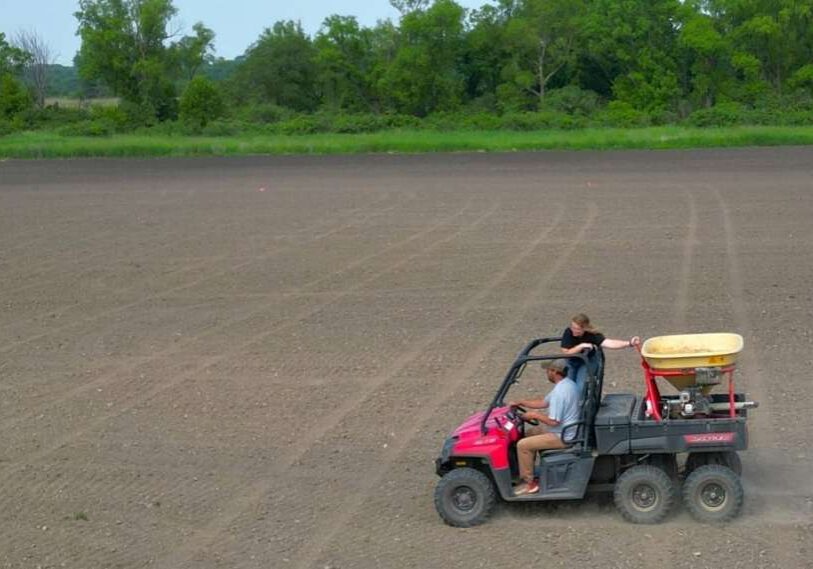The Minnesota Driftless Hiking Trail Gets Two Steps Closer to Reality

CHATFIELD – Every journey begins with one step. And when Marty Walsh, Lead Organizer of the Minnesota Driftless Hiking Trail (MDHT), moved to Chatfield area he stepped onto a path that soon could reach all the way to the Mississippi River.
In 2017 Walsh started a job with Community and Economic Development Associates (CEDA) where he saw first-hand the positive economic impact of outdoor recreation in Southeastern Minnesota. From biking to fishing to ATVing to kayaking, not only were visitors flocking to the region for adventure but this wide range of outdoor opportunities was drawing new residents.
Walsh quickly saw that these possibilities added a quality-of-life factor that can’t be found in many places. As he put it, “tourism assets and access also work well for residents.”
An avid hiker, Walsh frequently visited well-known trails such as the Ice Age National Scenic Trail in Wisconsin and Superior Hiking Trail on Minnesota’s North Shore. Both trails are great examples of long-distance, backcountry hiking that Walsh knew could be replicated here in bluff country.
Walsh and his hiking friends saw how our topography and natural beauty combined with our quaint small towns and community assets could create a hiking experience that would easily measure up to these national destinations. And it wouldn’t require a 5- to 10-hour drive just to reach the trailhead.

Spring starts to emerge on the narrow, but well-worn trail leading through these woods. (Photo by Julie Fryer)
A winding path from vision to reality
They began to envision the Minnesota Driftless Hiking Trail, a 110-mile trail stretching from Chatfield to the Mighty Mississippi east of Caledonia. They imagined a regionally-specific trail with unique features that would serve both visitors and residents and become another tourism asset for the region.
Modeled after more famous trails such as the Appalachian Trail and, even closer to home, the Lost Creek Hiking Trail in Chatfield, Walsh and his group started piecing together the framework of a new trail. They even embarked on a few test hikes on known trails which showed them they weren’t just dreaming. The MDHT could happen but it was going to take time and dedication.
As it often does, life interceded and a job change plus the pandemic forced Walsh to temporarily set the project aside. But his interest in hiking and that of his newfound hiking community kept the dream alive and by 2021, the vision didn’t seem so far-fetched. Word quickly spread through the community and soon the new trail was on its way to becoming a reality.
Routing the future for area hikers
As this group of local volunteers started talking with landowners and sharing their knowledge of existing trails, even more people joined in. With landowner permission, hikers spent weekends following deer trails or mapping out good spots to connect portions of trail.

Proposed area for trail development. (Graphic courtesy of Minnesota Driftless Hiking Trail)
After each outing and conversation, they’d log the data in their mapping tool for future reference and work on getting commitments from landowners for access. The MDHT group plans to use Recreation and Conservation Easements for landowner partnerships. The group also has worked with the Department of Natural Resources (DNR) to identify parcels of public land that would work best for the first part of their trail designation.

This third-generation farm near Pilot Mound, owned by the Lieb family, is the first parcel added to the Minnesota Driftless Hiking Trail. (Photo by Stena Lieb)
Stena and Andy Lieb of Lieb Family Farm near Pilot Mound were the first landowners to sign on to the trail project. This third-generation farm is on Trout Run Creek where Stena recalls memories of exploring in the woods with her Mom as a girl, foraging for mushrooms, and spending her days in the woods learning about nature.
While the Liebs no longer have cows, the trails cut by the herd make a good path for hikers, and the family is thrilled that others will be able to have this outdoor experience. As Stena said, “We think it is critical for young people to get outside and explore and learn. We’ve always been outdoors people and love being able to share our land and the beauty of the Driftless area.”

Gwen Lieb gives a ride to her cousin on the trail through their woods near Pilot Mound. (Photo by Stena Lieb)
While still being put together, Walsh expects the MDHT will join existing trails such as the Root River Trail and the Lost Creek Trail. Additionally, it will connect with or run parallel to public lands and other mixed used trails such as the bike trail in Lanesboro and current horse and snowmobile trails along the route. The trail will be supported and minimally maintained by volunteers but left as natural as possible.
Volunteers are continuously working to find more trails and landowners willing to grant easements on their property. The goal is to highlight every aspect of the Driftless region and, when finished, bring hikers close to the unique features of the area including agricultural and human-made features.
Where possible, trails will cross through or near local communities; existing campgrounds or rental accommodations; and state or county parks so hikers can explore, grab supplies and food, or find a comfy spot for an overnight rest. With proper gear and supplies, hikers will be able to travel the entire trail at their own pace and overnight on the trail (where allowed). In its entirety, the trail will run from Chatfield to a yet-to-be determined final destination at the Mississippi which will depend greatly on where the organization can secure easements and find trails.
Walsh mentioned, “We chose this style of trail because it doesn’t already exist here, it’s quicker to launch, and it’s simpler for landowners to join.”
While donors have been stepping up since the founding, in late 2023 the MDHT was granted 501(c)3 status by the IRS so it can now receive tax-deductible donations. This, along with its merchandise sales, has greatly helped its ability to fundraise to support all its efforts and move the project into the next phase.

View from the hilltop east of Chatfield overlooking the area for possible trail routes. (Photo by Julie Fryer)
Two big steps forward
With the new year came two big announcements that are moving this project quickly into its next phase.
In 2023, the Minnesota Legislature put together a bill that included funding for the MDHT to be awarded from the Environment and Natural Resource Trust Fund (commonly called the Legacy Fund which is funded by state lottery proceeds). Earlier this year, that legislation was passed and Governor Walz signed the bill granting over $426,000 to the project. Starting in July 2024, MDHT can access the funds and go forward with hiring a full-time director; work with a trail designer and building consult; and outfit crews with trail building equipment.
In addition to the legislative funding, the University of Minnesota (U of M) recently chose MDHT as a pilot project for the U of M’s Regional Sustainable Development Partnership Empowering Small Minnesota Communities grant.
This grant provides technical assistance to community development projects in Greater Minnesota and will help with developing digital and print mapping standards. Volunteers have already been gathering data and these important tools will improve that process and eventually evolve into maps for hikers to use on the trail.
This pilot project also helps develop a trail standards plan which will include things like slope, surface, and clearance for trail builders. In addition, the grant will help create plans for integrating existing community resources such as city parks or existing trails.
What’s next for the Minnesota Driftless Hiking Trail?
Walsh shared that the best thing people can do right now is spread the word; subscribe to its newsletter; make a donatation; get out and enjoy existing trails; and if you’re a landowner, consider joining the project.
Once the director is hired, Walsh expects to have more partnerships with other outdoor groups, hiking and backpacking groups, and local businesses. He truly sees this as a community partnership that adds one more incredible outdoor opportunity to the Driftless region.
Walsh also suggests that folks follow them on social media and watch for upcoming local events in Fillmore and Houston County. “Word of mouth is our best tool right now in getting this trail going,” Walsh said. “The more folks that know about it, the more interest we get.”
By default, MDHT has become a bit of a hiking hub for Southeastern Minnesota — and it’s leaned into the role. With its vision to connect existing hiking trails, even though none are officially connected (and may never be), the MDHT website is a one-stop shop for where to hike in the area. It lists multiple local trails (with website links) and includes information on broader opportunities in the Midwest.

Marty Walsh checks a trail visitor log on a sunny spring day. (Photo by Julie Fryer)
Back at the trailhead of the Lost Creek Trail near Chatfield, Walsh read off the cities of visitors logged into a guest book — including people from the North Shore, Wisconsin, and Iowa.
Beaming from ear to ear with the bright blue sky and trail behind him, Walsh said, “This just shows how much of a draw a trail can be. With intentional planning and good education, we know it can be a destination as popular as the Ice Age Trail or the Appalachian Trail.”
MDHT’s 2024 educational and fundraising events: Additionally, the team is looking for volunteers to assist with: Geographic Information Systems (GIS) mapping; hiking-event support in Fillmore and Houston counties; board members; and more. MDHT is also looking to build relationships with landowners and this year in, particular, focused on trail access between Beaver Creek Valley State Park and the Mississippi River near Reno in Houston County; and in Pilot Mound, Carrolton, Holt, and Amherst Townships in Fillmore County. For the latest news, follow MDHT on its Facebook page and subscribe to its newsletter. Walsh is happy to chat with groups in the area, so feel free to reach out for more info (contact info can be found on the MDHT website). And share the word of this exciting development with the hiking enthusiasts you know!






